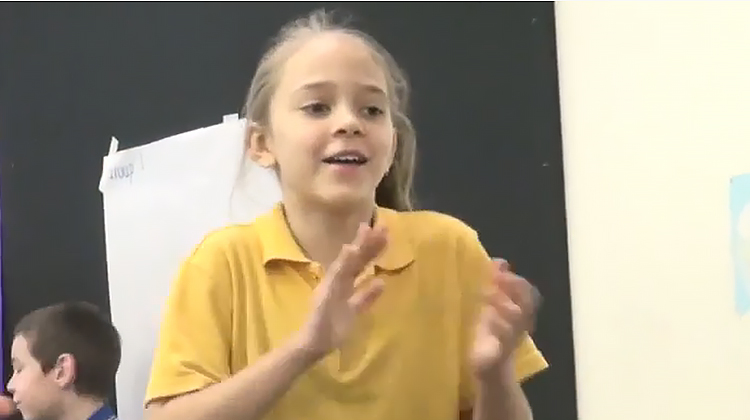Maths gets physical

Primary students in some of South Australia’s most disadvantaged schools who had seen maths as irrelevant and boring, have found excitement, motivation and new ways to access and express their knowledge of the subject.
An experimental approach has the children moving, dancing and whirling to make connections between maths and the real world, spin around once, how many degrees in that? You get the idea.
Teachers said that previously disinterested students were able to “just get it” once they started to use their bodies. One student, who was previously bored, frustrated and sometimes even violent, changed once his body and emotions became part of learning.
“They can dance it, they can stamp it, and they can play musical instruments to show their understanding of fractions or ratios. The more connections they make, the more that snowball effect kicks in. It gets really exciting,” said one teacher
As teacher Katina Hawkes says in video footage of the project in action, “it is the sense of wonder (the students have) about maths now.” In one example, a teacher was cutting fruit into quarters for the students’ snacks, and a child pointed out that after one piece was eaten, three-quarters were left, the teacher had never seen that kind of the thinking from a Year 1 student.
For the project’s chief investigator, Dr Robyne Garrett of the University of South Australia, it was gratifying that “teachers commented on increased engagement from their students, as well seeing the power of joy and laughter, with ‘light bulb’ moments as students realised that they were smarter than they previously believed.”
Researcher Dr Belinda MacGill, also of the University of South Australia, says that the project meant trying something new. “We brought methods that might traditionally be seen in arts and drama to bear on learning mathematics. This opened new pathways for young learners to grasp key mathematical concepts, and once they got it, they discovered their own motivation to learn.”
The research team from the University of South Australia designed their own innovative way of teaching, Creative and Body-based learning, or CBL. They drew on the work of Katie Dawson, an American academic from the University of Texas at Austin who specialises in drama-based teaching, reimagining it to include a whole range of art, movement, and creative activities.
“The body is not a barrier to knowledge, it is pivotal to how we know, and certainly essential to how children learn – right from the time they are babies learning to crawl,” says researcher Joss Rankin.
“When concepts are engaged with through physical action, they become more meaningful and exciting than when they are purely cognitive. This research strongly supports that idea. Meaning and excitement engages emotions and creativity, and that creates belonging. From there, children start to see possibilities for hopeful futures,” says Mr Rankin, who based his Masters of Education at the University of South Australia on this research project, and now teaches – utilising these approaches – at Flinders University.
All the schools included in the project were strongly affected by social disadvantage. “Children dealing with complex disadvantage are more sensitive to the negative impacts of perceived ‘failure’. Bodily engagement brings a kind of energy back into learning that can cut through self-doubt. It spurs students to take risks, speak out and share ideas,” says Dr Garrett.
According to Dr MacGill, “This way of learning gives students more room to find ways that work for them. Taking control of their own learning is very liberating. It leads them to make genuine connections to their real lives. They say it themselves; ‘oh, I need maths to become a plumber’, or ‘I need maths for soccer’, they begin seeing their own world from the perspective of maths.”
“It is about students feeling safe enough to become learners. Once students see themselves as successful, they no longer use behaviors that allow them to avoid learning’s challenges. His teacher was able to tell the parents that their child, ‘didn’t avoid today, didn’t run out of the room, didn’t get suspended for hitting someone in sheer frustration, but got up and actually had a crack.’ It can be hard to get to that point,” says Dr MacGill.
Joss Rankin, Robyne Garrett and Belinda MacGill, (2021) Critical Encounters: Enacting Social Justice Through Creative and Body-Based Learning in The Australian Education Researcher 48:281–302 DOI: https://doi.org/10.1007/s13384-020-00389-6